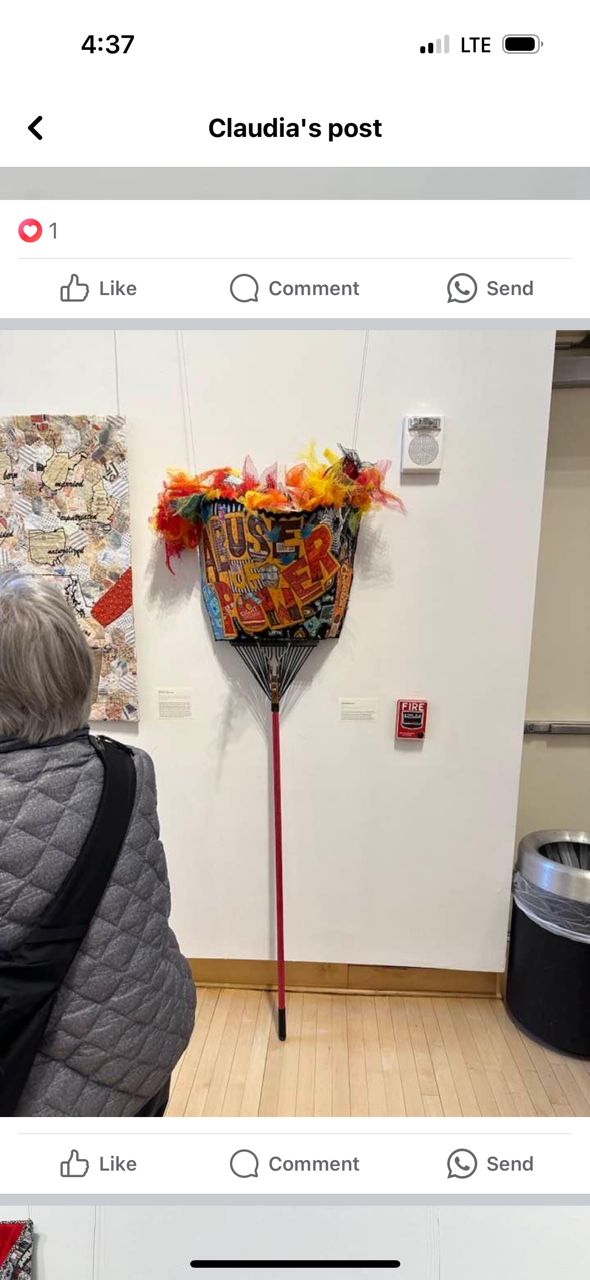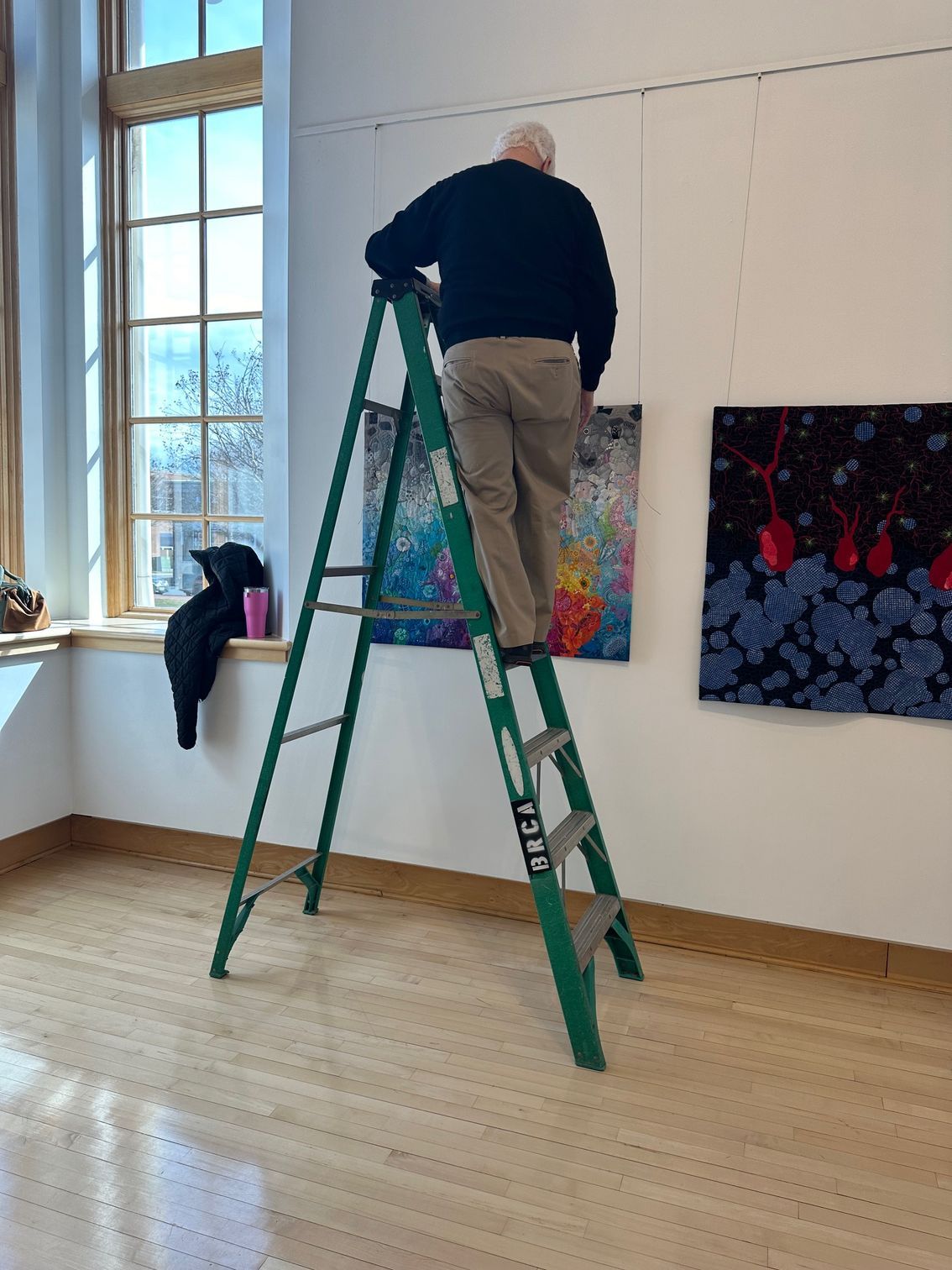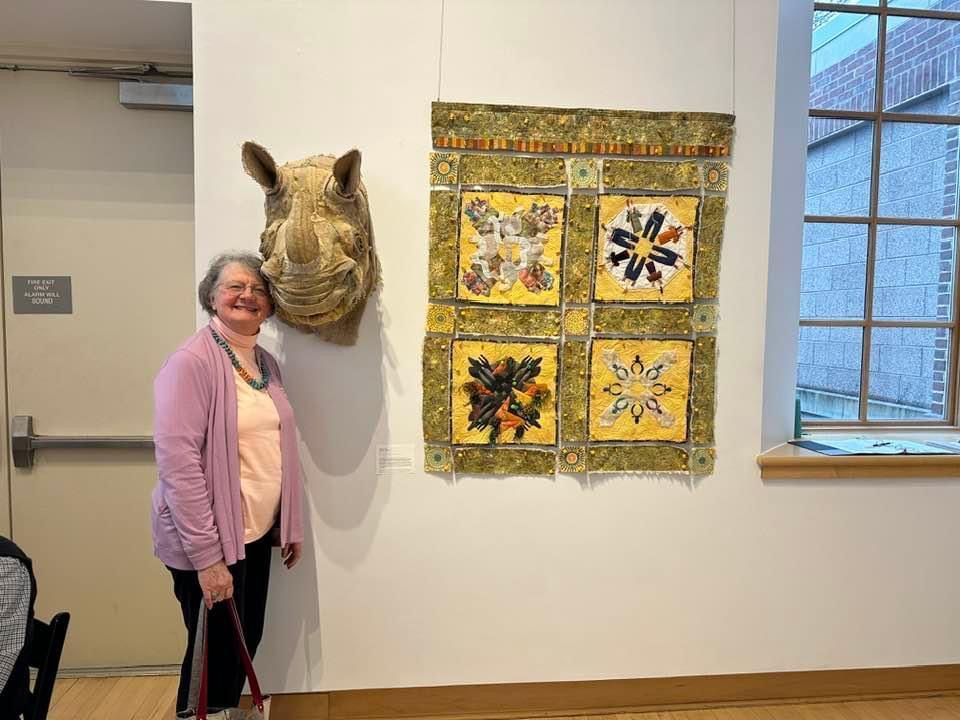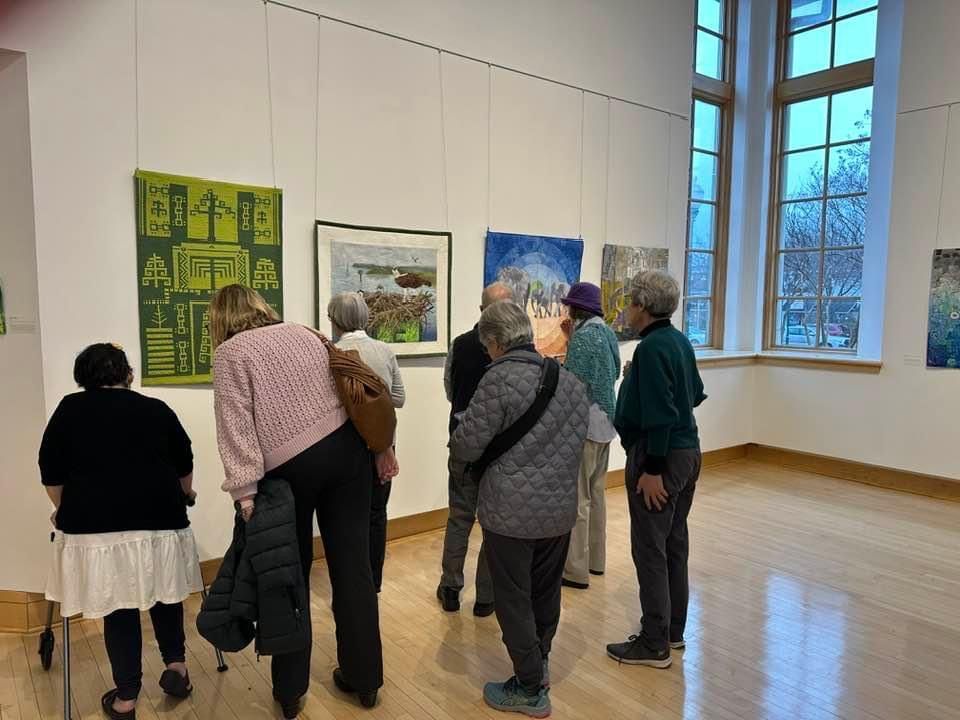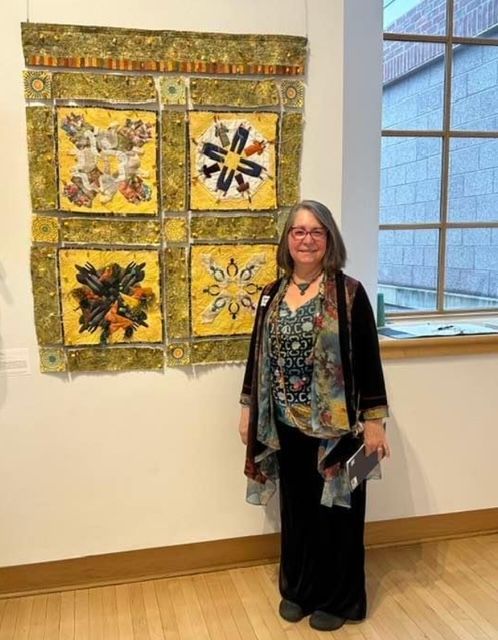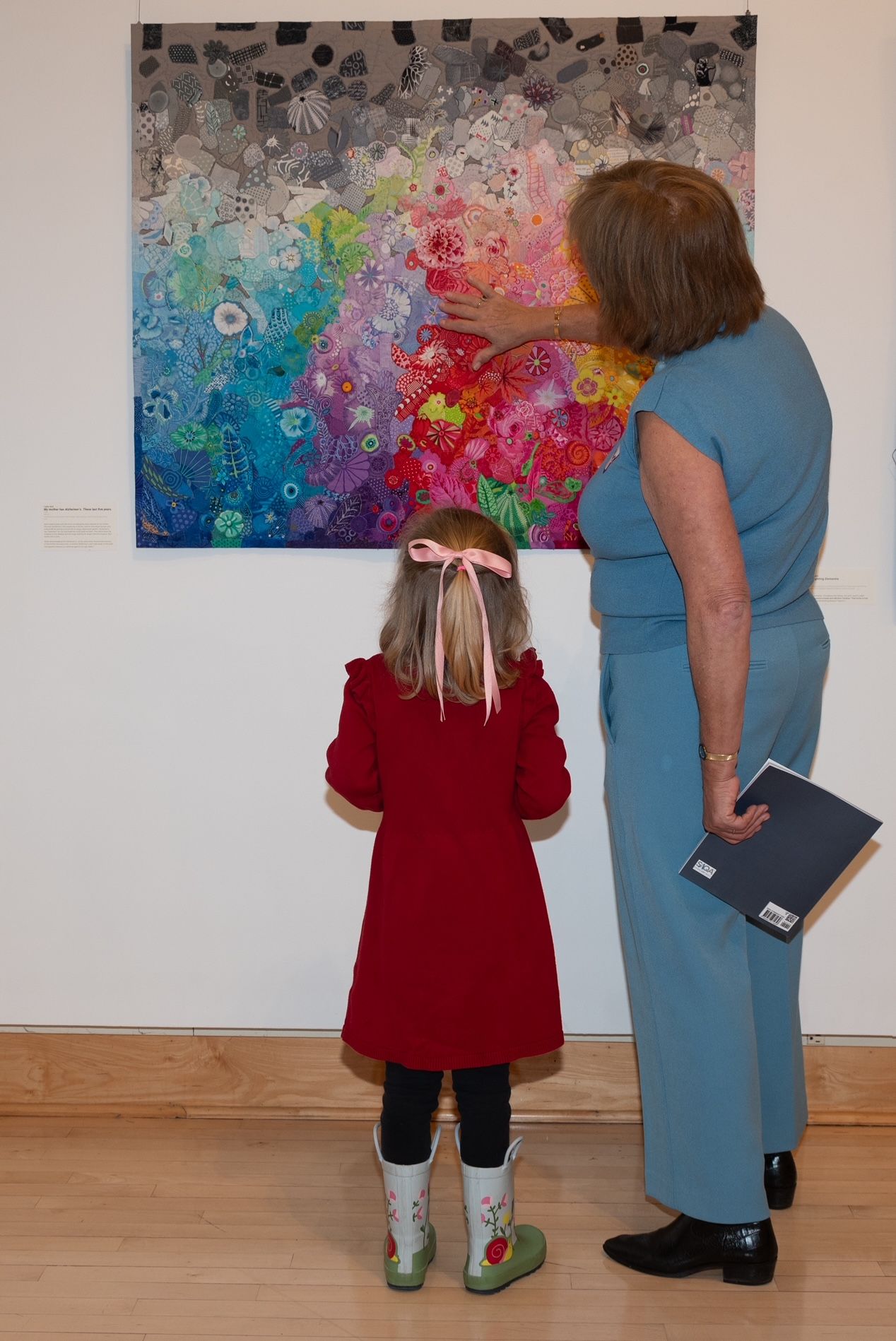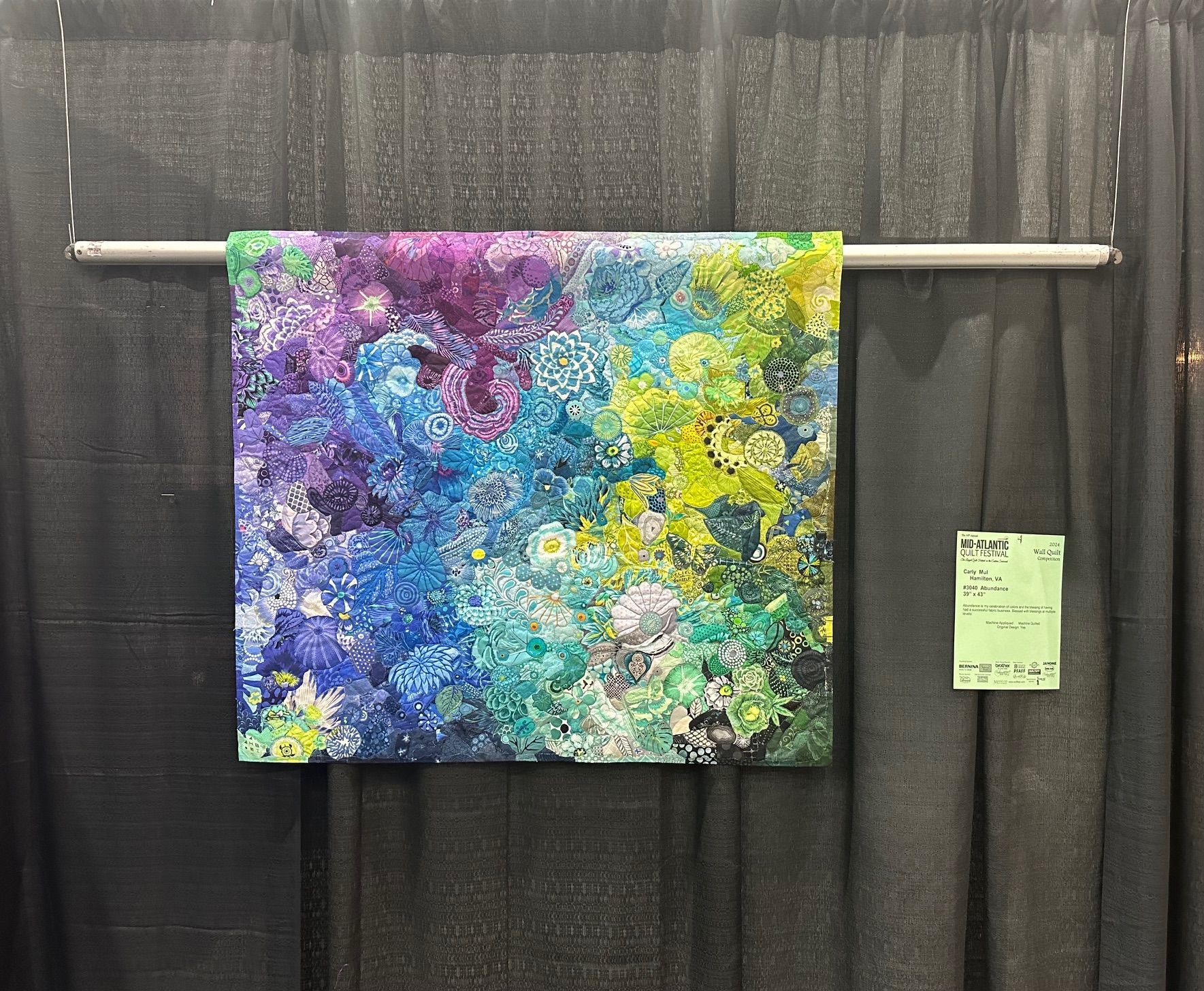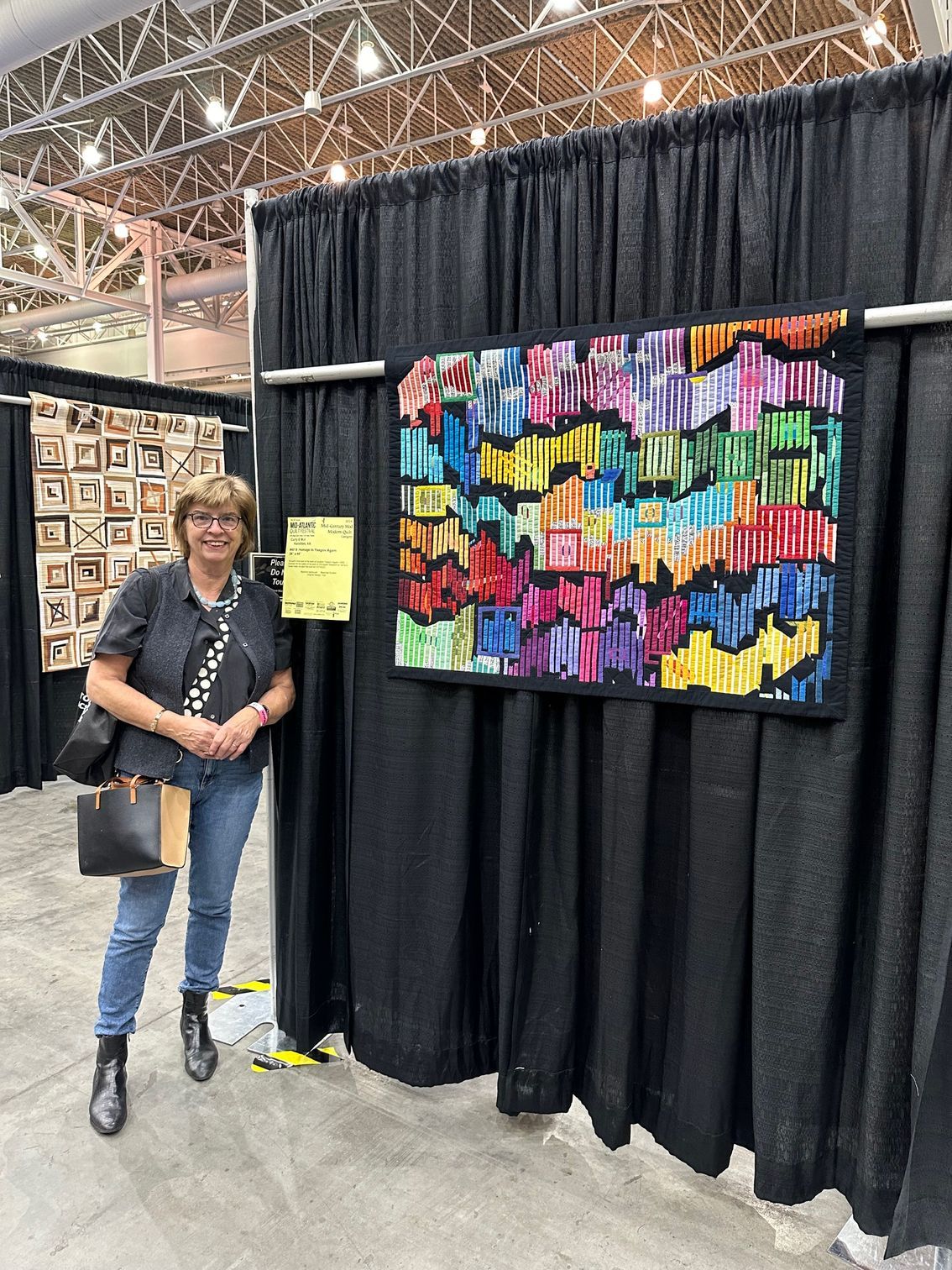Getting judged into a quiltshow (if you have a chance to go to an unjuried quiltshow: Go! We all had to start at one point and beginners are so excited about their work) can be based upon a category, but I don't think the judges are so much looking for a message in the total of the selected works. They are looking for what they think qualifies best for each given category and they are definitely "policing" at a different level than art exhibits. Where at an art exhibition the work is judged on its originality and expression of an underlying message, the traditional quiltshow will judge it on the execution of applied techniques. Those techniques fit a certain standard that has to be met and that by itself sets a more conservative/limited view.
In general, I got fair and valuable comments on my quilts from the Mid Atlantic judge. I appreciate how thoroughly she looked at every side of the quilts and made the effort to write her opinion down. She saw my weaknesses, she saw my strengths. She also encouraged me ("it would be better") to sew the binding next time on a collage quilt instead of gluing it. The "wrap and glue" binding developed by Susan Carlson, for sure one of the best collage quilters around, is a fabulous binding technique that doesn't stop the quilt as a traditional binding does. There is no framing, the collage is open-ended. It looks so much better! Susan herself writes - and warns - that some judges will make a point of this. Others will not. You take a risk when you make the quilt just to enter a show (who does that??). So my Abundance quilt got exactly that comment from the Hampton judge. It made me smile. The judge was not looking how I had done this, she doesn't like a glued binding technique, period. It is the always-returning discussion of how things "should be done". I respect the opinion of the judge but I respectfully disagree. It would not be better for me. I would have done that if I had thought a regular binding would be better. I didn't and I don't. I brought this point up to my fellow artists at the artists' reception and they had a good laugh. "My batting is hanging out", said Andrea Finch. "The quiltshow judge would not even let me in!" There is a reason for this, a meaning, a function. When people do things differently, why assume they don't know how it is done most of the time? Why not assume they have a reason for doing things differently? You learn this by having looked at art and art history and it makes a very important life lesson. But I can move on and will do or not do it next time again, depending on what I think will be best for that next particular quilt.
At the Sew to Speak exhibition the artist's statements are extremely important: what is the artist trying to say with the work? What is the message that is in there? Some very powerful pieces are on display that would never made it into a quilt show, because the work is not quilted to begin with, not quilted "properly" or the result is not necessarily even "pretty". One artist, Eleanor Levie, used a rake in the display of her artwork! In "Grounds4Removal" she created a powerful message which, I am sure, is more important to her than making a pretty quilt! It is about sewing with fabric and expressing a thought that way. It is not about making beautiful quilts. The artist's statements are crucial to read to understand what the idea behind the work is.
That is completely different from a quiltshow. Of course, a quilt show is a quilt show, so each work needs to be a quilt, with 3 layers quilted through. It is a particular form of sewing and I love reading the statements of the quilter the show provides. It makes any quilt more alive.
Some quilts at an art show could make it into a quilt show and vice versa. In general, quilt shows follow the trend of what we all as quilters are doing and at the moment pictorial quilts are more popular than repetitive block quilts. So you will see more "artsy" quilts at quilt shows than 15 years ago. There is also more modern quilting in general than years ago. If you happen to love only traditional quilts, yes, you would be disappointed at a show. I heard from someone that there were so few "real" quilts at the quilt show. This person's perception of what a quilt is, is not what quilters in 2024 are focused on.
In general, I see more differences than similarities between art exhibitions and quilt shows. Sure there is an overlap, but by choice, each caters to a different group of fabric lovers.
Some other differences:
The size of the show: In general an art show will be much smaller in size than a quilt show.
There are no vendors at an art show.
The type of location is different. Art shows are at galleries or art centers. Quilt shows can be at fairgrounds, high schools, and convention centers.
The kinds of fabrics being used are different as well: Many art quilters are hand-dying their fabric. They stay away from commercial cottons. They love to have the entire process completely in their own hands. It's more a feeling than a reality because beautiful hand-dyed fabrics are also made by commercial manufacturers. I can see their point, it should come from their hands from start to finish and it could be fun to do. I can't see myself going that road as well because I love commercial fabrics way too much to exclude them. But... you never know! And what about threads? Can you even make your own thread? I don't know.
There is a higher usage of mixed media at art shows. Artists are not afraid to paint on fabric and incorporate papers, ribbons, and anything else that can get attached to the work. They are true leaders here because more and more non-artist quilters are interested in working with mixed media, especially pencils and stamps, in their quilts.
Art shows are usually not charging an entrance fee, but you can buy a book/catalog of the show with all the art beautifully listed in it.
An art show usually lasts a few weeks, while a quilt show lasts only four days max, with the last day always with much less energy.
My VA-based family came to the artist's reception and granddaughter Nora loved the Rhino, made by Holly Lei Cole. "Veterans: Rhinos" is unbelievable indeed and an amazing fabric creation! Sew to speak becomes "Sewn to be Heard". That's really what it is about: some works appeal to us not so much because of what the maker has to say, but what we can see/understand. What we can identify with or relate to. My 4-year-old Nora has no connection with trauma, environmental concerns, or voting rights. A rhino is recognizable for her. Art shows us a mirror of who we are as well.
That is why each of us can love a quilt that doesn't talk at all to another person. You see that at a quiltshow. Some are true show-stoppers, while others are run by. At the art exhibit, no work was run by. Each work was given close attention. Nice!
This says something about the displayed art, but also something about the viewers. I like that.
If you have the opportunity: visit Sew to Speak in Germantown! You won't regret it. It will be there for a few more weeks!

